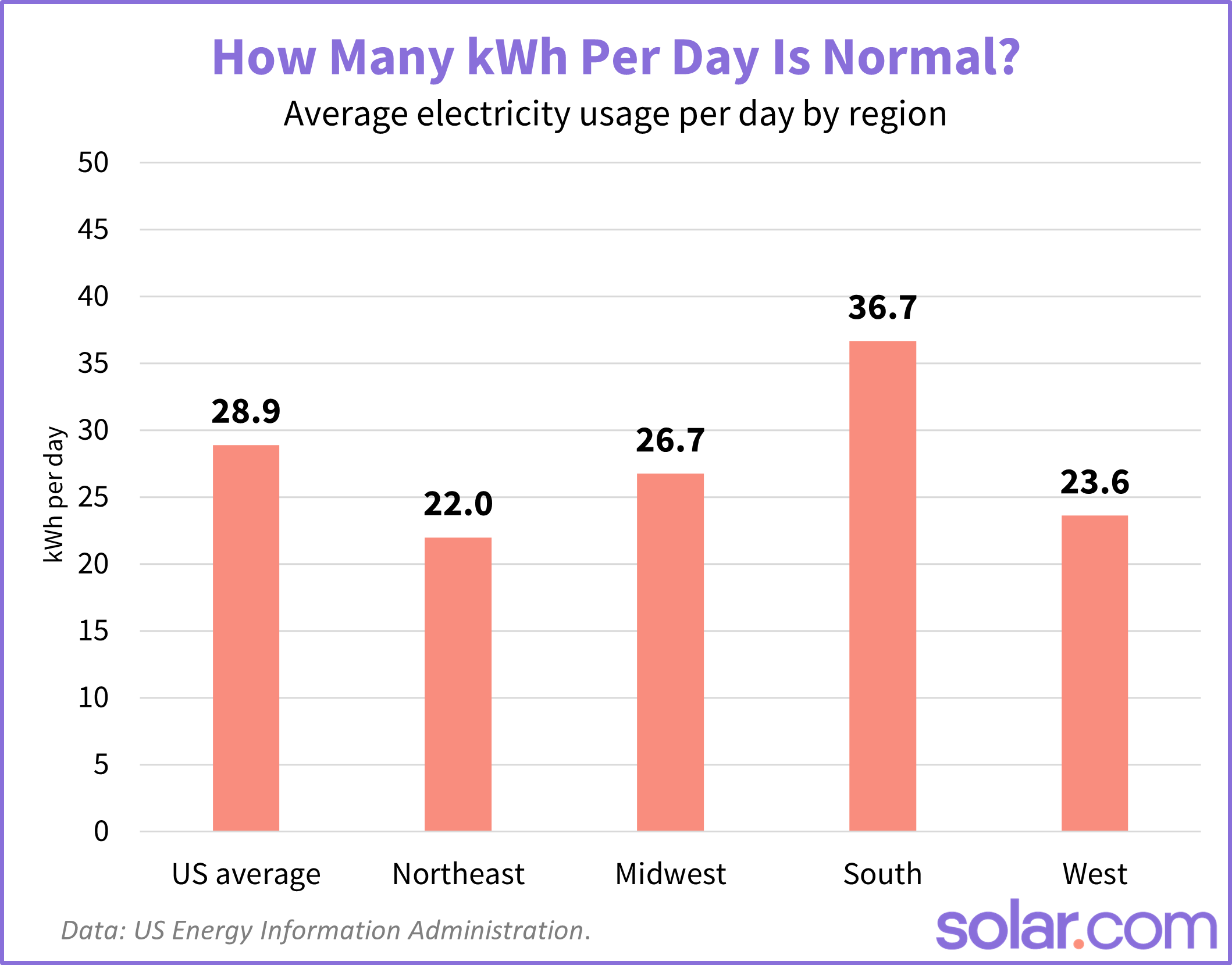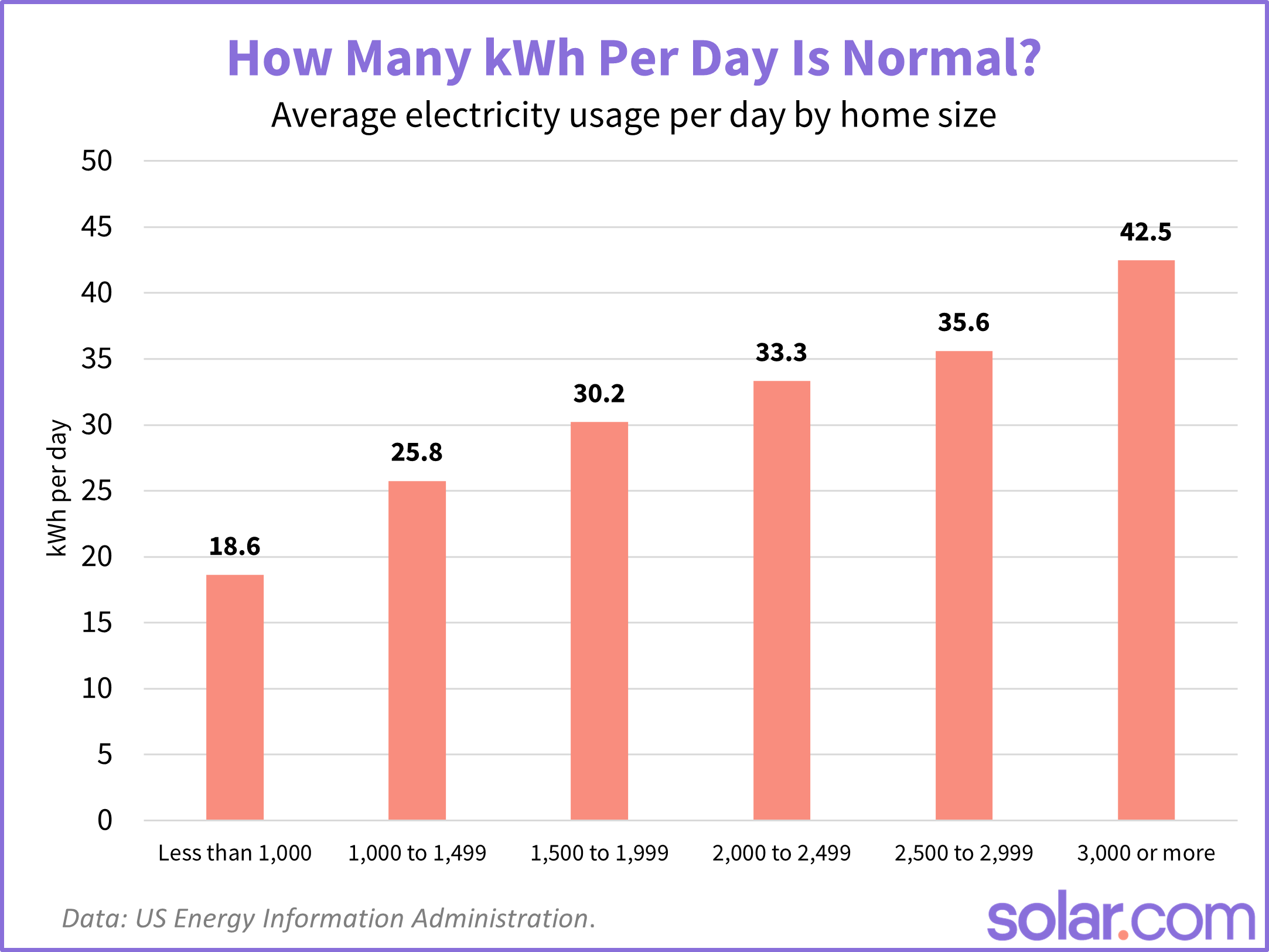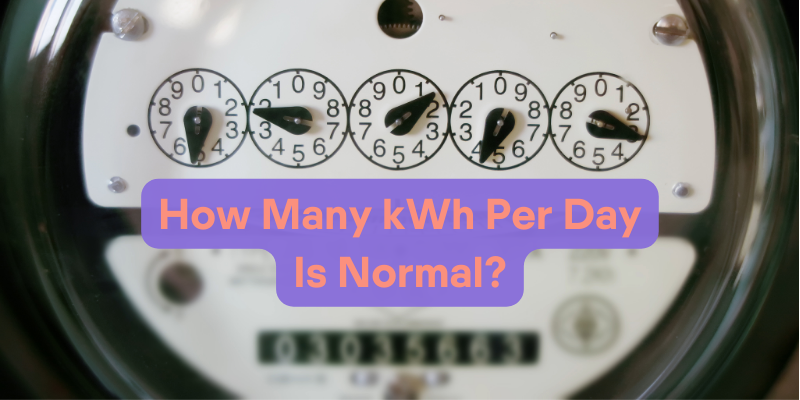How Many kWh per Day Is Normal?
Homeowners across the US are receiving the highest electricity bills of their lives (so far), thanks to a combination of rapid utility rate hikes and record-breaking summer heat waves that are driving up electricity usage.
With electricity more expensive than ever, it’s normal to wonder how many kilowatt-hours (kWh) is normal to consume in a day so you can accurately budget for your energy costs and make a plan to lower them.
In this article, we’ll explore average daily electricity consumption in the US and how it differs based on your home size, family size, and location.
Let’s get started with a baseline so we understand what’s high or low.
Did you know? With the “One Big Beautiful Bill” signed into law, the 30% tax credit for solar ends on December 31, 2025. Residential solar and battery systems will need to be installed by the end of the year to qualify for this federal tax incentive. Compare quotes today to secure an installation date and lock in your home’s full savings potential.
How many kWh per day is normal?
The average US household electricity consumption is 29 kWh per day, according to the most recent data from the US Energy Information Administration, which means the average kWh usage per month is around 870 kWh.
However, it’s worth noting that daily electricity consumption varies substantially based on the location, size, and number of members in a home.
For example, in the hot sticky South, it’s normal to use around 37 kWh per day to power your air conditioning day and night for much of the year. Meanwhile, it’s normal to around 23 kWh per day in the Northeast and West, where more moderate climates require less energy for heating and cooling.

Of course, climate conditions and daily electricity usage vary within each region. Use the map below to see the average daily kWh consumed in each household in your state.
Find your average kilowatt usage per day
Now that we have a baseline average for kWh usage per day, let’s see how yours compares. Start by finding a recent electricity bill (check your mail and email inbox, or log into your electric utility account). On your bill, you’ll likely see a “Historical Usage Graph” that shows a year’s worth of electricity consumption, like the example below:

Add up your total electricity usage over the last year and divide by 365 to get your average kWh usage per day. Make sure to get at least 12 months’ worth of data so you are accounting for seasonal highs and lows throughout the year!
Once you know your kWh per day average, you can see how it compares based on your state, square footage, and number of household members. Check out the charts below to compare.
How many kWh does a house use per day?
The average US household uses around 29 kWh per day. However, this can vary by the size of the home, as bigger homes require more energy for heating, cooling, and lighting and may have additional electrical systems like multiple refrigerators, TVs, pools, and hot tubs.
In fact, the average electricity usage for a 3,000+ square foot home is over 42 kWh per day, which is over twice the average usage of homes less than 1,000 square feet.
The median home size in the US is 2,000 square feet which averages around 30-33 kWh of electricity usage per day.

Related reading: Which Celebrity Mansion Could Offset the Most CO2 With Solar Panels?
Is 40 kWh per day a lot?
40 kWh of electricity usage per day is much higher than the average household consumption of 29 kWh per day. However, it’s quite normal for homes with 3,000+ square feet and/or five or more members (especially in the South!)
The chart below shows the average daily electricity consumption based on the number of people in a home.

Each additional member of the house represents another person doing laundry, charging devices, using hot water, leaving lights on, and demanding the home stay at just the right temperature. Once you reach five members, it’s quite normal to have daily consumption near or above 40 kWh.
It’s important to note that having high daily consumption – like 40 kWh – presents a massive opportunity for savings by going solar. Like many products, pricing for solar projects (measured in dollars per watt) gets better as the project gets larger. This allows you to drop your cost per unit of electricity lower than homes with smaller solar projects and, by using more kWh, you have more opportunities to save.
How many kWh per day is normal in summer?
Electricity consumption ranges from 20-50 kWh per day in the summer, largely based on how hot it gets and how much A/C you use. At the national average, summer electricity usage is roughly 20% higher than the average daily consumption throughout the year. As such, electricity bills tend to be higher as well, especially in areas with time-of-use rates that increase during the summer months.
The chart below shows the average kWh per day in summer for each census zone. Use this map to see which census zone you are in.

The West South Central states of Texas, Oklahoma, Arkansas, and Louisiana have the highest summer electricity usage at 53 kWh per day, which, at 12 cents per kWh, translates to $190 per month and nearly $575 over the summer.
Lower your cost per kWh with solar
Everyone’s daily electricity usage is different and “normal” is whatever you want it to be. Electricity consumption can be hard to control since so much of it is tied to heating and cooling and is dependent on climate conditions.
However, you can control the price you pay per kWh of electricity by installing solar panels. Connect with an Energy Advisor to explore your savings potential.








